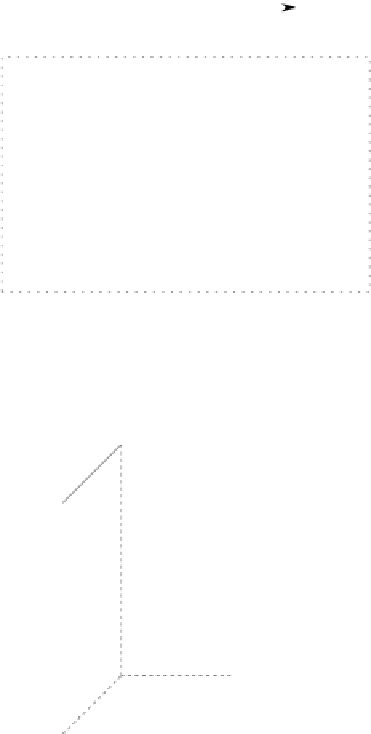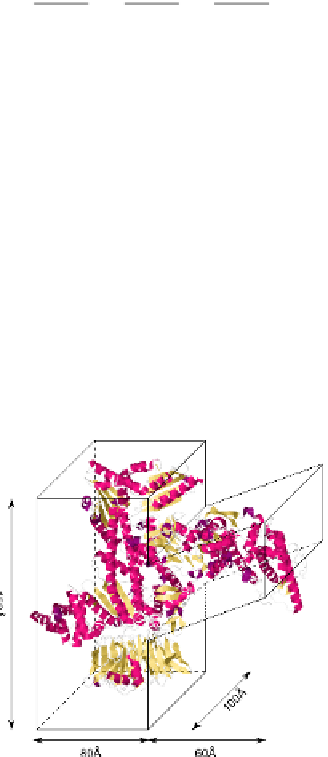Information Technology Reference
In-Depth Information
Fig. 3.
In addition to the actin-agent (Figure 2), the simulation was extended with a second type of
agent for Arp2/3. This agent can bind to an bottom-bound actin-agent. Then another actin-agent
can bind to the top-binding side of the Arp2/3-agent, the next actin-agent to the middle binding
side and the Arp2/3-agent becomes fully bound.
Fig. 4.
The physical size of Arp2/3 determines the size of the agents in the simulation [24]
To compare our results with the simulation of Cardelli et al. (2009), we used the
same number of 1200 free actin agents and 30 Arp2/3 agents. Cardelli uses this number
of agents to simulate a concentration of 1200
μ
M. For concentration values in a spatial
simulations, it is necessary to calculate the volume of the environment:
n
Actin
=N
A
× V × c
[1
/mol × l × mol/l
]
V
= 1200
/
(N
A
·
1200
×
10
−
6
)
V
=1
.
66
×
10
−
18
l
=1
.
66
×
10
−
21
m
3
,
where
n
Actin
is the number of molecules,
N
A
is again Avogadro's constant,
c
is the
concentration of molecules and
V
is the volume. Assuming the environment as a cube,
the length of a side is approximately 1184.0 A.
































Search WWH ::

Custom Search